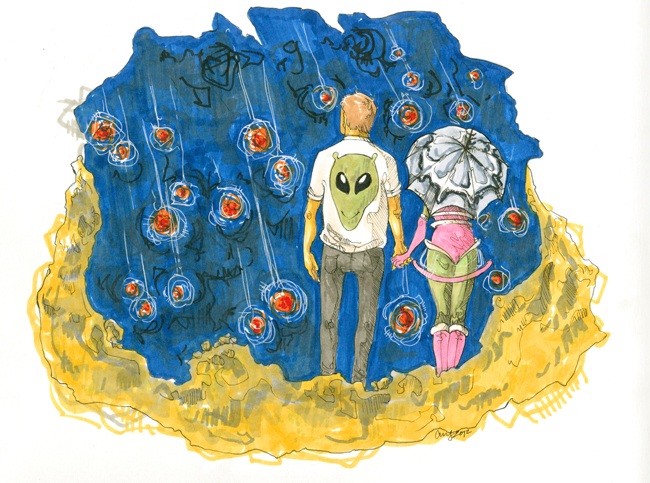
The Secret to Multicellular Life, Revealed?:
Scientists at the University of Minnesota have created multicellular life from single cellular yeast in the lab. Starting with the yeast and artificially selecting for heavier cells, the cells began clumping together after several generations to form multicellular life. While this isn’t a direct analogue for how multicellular life probably evolved in the wild, the experiment may shed insight as to how that step took place several billion years ago.
Looking Into a Black Hole:
Similarly, several astronomers met this week in Tuscon to discuss hooking up many single radio telescopes into a multi-telescope set-up in order to record a black hole in action with more clarity than has ever been seen before. While a black hole itself can never be seen directly, since light can’t escape it, by using these telescopes together scientists hope to be able to see matter falling into and feeding a black hole in real time, which should give as good a picture possible of what a black hole “looks” like.
The World’s Tiniest (And Chilliest) Computer:
From the very big to the very small, researchers at IBM have created the tiniest memory storage yet. Using only 12 iron atoms — as opposed to the usual million or so — they can record either a 1 or a 0, the basis of binary code, the language of computers. The catch? This only works at temperatures around absolute zero, or approximately -459.67 degrees Fahrenheit — far too cold to use the computer comfortably. However, the researchers say that they could make a similar system work at room temperature using 150 atoms.
Mars Rocks!:
We appear to have had verifiable Martian visitors last summer — albeit in rock form. Scientists have confirmed, using age and chemical signatures as evidence, that rocks found during a July meteor shower last year originated from Mars. This represents a unique opportunity, since no spacecraft has ever visited Mars and returned with rock samples. Scientists can study these Martian rocks from the comfort of our home planet. Due to their rarity these rocks are quite pricey, selling at about 10 times the price of gold.
Crash and Burn:
Martian rocks aren’t the only alien visitors we’ve had. The Russian craft Phobos-Grunt, originally designed to land on Phobos, a Martian moon, came crashing back down to Earth this week. Rushed into space because of the narrow time frame when Mars and Earth are fairly close to each other in orbit, it wasn’t ready for prime time and all 15 tons of it came back down. The danger wasn’t necessarily of it falling on anyone important, but the fact that it was full of highly toxic fuel is very unsettling. Most of the spacecraft burned up in the atmosphere, leaving an estimated 440 pounds of it to crash in the Pacific Ocean.
Step It Up, China:
In other bad news, the “Second National Assessment Report on Climate Change” has come out and, not surprisingly, reaffirms that if China continues their rate of dirty energy consumption, the results will likely be catastrophic. The report estimates that carbon dioxide emissions will start to fall by 2030 and won’t reduce significantly until the latter half of the 21st century unless something is done before then. The report was not done to set policy and doesn’t make any suggestions as to how to reduce carbon dioxide emissions. It does, however, predict consequences given the current state of things, which include droughts in some regions and flooding in others, affecting the country’s ability to provide food to its people and consequently causing an increase in the cost of farming.





















